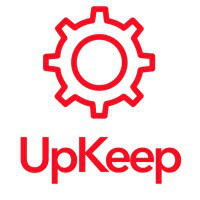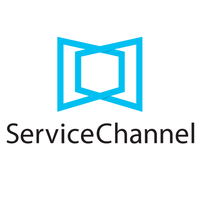In this article...
What is CMMS?
Computerized maintenance management software (CMMS) contains information about a business’s maintenance operations. The information is meant to help maintenance workers be more efficient in their jobs. For example, the system can show what machinery needs repairs or maintenance and where the needed materials are. CMMS can also help management make more informed decisions on resource allocation and cost breakdowns.
The maintenance and facility management discipline is one of stunning diversity, ranging from basic upkeep at a single-site facility to asset management at a global enterprise. Unsurprisingly, there are a broad range of applications available to help facility managers control day-to-day operations.
CMMS varies in complexity, price, and industry use. Without the right expertise, it can be difficult to choose the best CMMS programs for your business. This buyer’s guide will help you better understand what CMMS has to offer, how your organization can use it, how to narrow your search, and how to compare CMMS vendor products.
Also read: What is a Computerized Maintenance Management System (CMMS)?
Find your new CMMS software
CMMS program overview
CMMS is a helpful, automated system for managing preventative and reactive maintenance of an organization’s facilities and assets. It gives lower-level workers tools to work efficiently and enter data about repairs, parts, and materials, and gives managers control and visibility into maintenance histories, compliance, and the condition of company property.
Also read: CMMS Functions and Buying Considerations
By optimizing workflows for back-end upkeep and eliminating equipment downtime, CMMS helps organizations devote more time and resources to their bottom line.
Since it has built-in tools to make asset management easier, many consider CMMS interchangeable with enterprise asset management (EAM). However, there are important distinctions between the two. EAM solutions tend to offer deeper functionality for handling assets of any kind — whether physical machinery or IT equipment — with centralized access across an entire enterprise. CMMS providers, on the other hand, are more often limited to physical assets in a smaller network of facilities, or even a single site. That said, CMMS and EAM are not mutually exclusive. Many CMMS programs integrate with EAMs and other enterprise software, such as enterprise resource planning (ERP) solutions to provide a more comprehensive approach to maintenance.
Many maintenance management solutions are sold as modular products, which allows buyers to build custom solutions, paying only for the features they need. Some products can be as simple as a work-order module built into a property management system to streamline the process. Larger companies can create more complex systems that cater to their needs in a way out-of-the-box systems can’t.
What are the best CMMS programs?
| Product | Billing & Invoicing | Callibration Management | Key & Lock Management | Deployment | Business Size |

|
no | yes | no | Cloud | All Sizes |

|
yes | yes | yes | Cloud/On Premise | All Sizes |

|
yes | yes | yes | Cloud | All Sizes |

|
yes | no | no | Cloud | All Sizes |

|
no | yes | no | Cloud | All Sizes |

eWorkOrders |
yes | yes | yes | Cloud | All Sizes |
Common features of CMMS programs
Regardless of industry vertical or product packaging, there are a handful of common features buyers can expect to see in almost any CMMS. Though CMMS solutions are equipped with all sorts of enticing bells and whistles, the reality is there are just a few core features that will have the most impact on your business. While researching different products, it’s important to focus on the core features rather than non-essential gimmicks that won’t necessarily satisfy your requirements — now, and in the future.
Work orders
CMMS simplifies scheduling and allocating jobs for repairs, inspection, or breakdown. It tracks progress from job open to job closeout, and most systems feature built-in reporting features.
The purpose of a work order is to initiate a task, clarify what needs to be done, specify completion dates, and give instructions as needed. a CMMS system will organize, manage, and maintain work order data as well as resources, expenses, and labor concerning the project.
Job and materials costing
CMMS tools record and standardize the database that displays job and materials expenses to help with prioritizing work, reporting, and accounting. These features make it easier to understand your budget and how you can optimize it.
Asset management
Equipment and assets are the backbone of an efficient business. They help produce products, serve customers, and deliver value. Equipment failure can also diminish a business’s ability to function successfully. Misuse, misplacement, and theft all negatively affect the performance and value of a company’s assets. Being able to track these metrics can be the difference between success and failure.
Key features you want included in your equipment and asset management are:
- Repair history
- Work orders
- Access to images, warranty info, meter readings
- Floor plan management
These features let you do all that is necessary to make informed decisions about current equipment and assets.
Interactive floor plan management is one of the most convenient features of a good CMMS, as it lets you interact with assets and equipment in your current floor plan layout. With this capability, you’ll be able to see where your equipment is, when it needs to be serviced, and when it needs to be replaced.
CMMS helps organizations track and control their physical (and sometimes digital) assets by location and condition. It records relevant data on warranties, service schedules, technical specifications, and parts inventories to keep your team up to date on all important information.
Inventory and procurement
Having the right materials is critical to any job, especially in maintenance. CMMS ensures the upkeep of appropriate parts, tools, and materials levels. You can track specific inventory locations in the system to quickly find the items you need. Most CMMS tools either have built-in order placement/purchasing features, or the system integrates with outside catalogs to make ordering simple.
Inventory management is how companies remain stocked with all the essential items they need to serve customers and complete operations. In the past, companies commonly used Excel and other spreadsheet programs to track inventory. Though effective in some ways, spreadsheets lack the necessary features to comprehensively manage and track real-time inventory.
A robust CMMS can track inventory (including all parts and materials), auto-order parts and supplies, and generate inventory reports. Of course, having this information is of no value unless reaches the right people. Most CMMS solutions can automatically send important alerts and updates to relevant personnel in your organization.
Regulatory compliance management
CMMS stores data and documentation to help managers comply with safety regulations, permits, and industry standards. The system also makes it easier to respond to audit requests.
Preventative maintenance automation
The need for preventative maintenance software is often overlooked in a company’s operations. With a maintenance management system in place, companies can get a bird’s-eye-view of all their facilities and locations to ensure that effective preventative care is scheduled in accordance with all standard operating procedures.
When small tasks are overlooked for long periods of time, problems get worse. Without careful tracking and maintenance, you run the risk of production errors, work injuries, and asset damage. Preventative maintenance tools like automatic triggers, email integration, reminders, equipment information, and auto-assigned tasks can streamline your entire process.
It’s no secret that preventative care is less expensive than paying for damaged equipment repair or replacement. Preempt equipment and facility failure by using time-based or meter-based triggers to prompt regular equipment servicing.
Condition Monitoring
To keep things running smoothly, your CMMS monitors triggers like heat, pressure, flow, voltage, etc. in order to schedule work or materials orders and provide performance insight.
Labor resource tracking
The CMMS stores personnel skill profiles for future job/skills matching (for example, an electrical or mechanical job) and helps you forecast new labor needs, so you always have the staff you need.
Reporting
CMMS can report on any number of facility and equipment-specific metrics, from failure codes to downtime, work order history, and peak use hours. It also includes key performance indicators (KPIs) such as work order resolution or inventory variance.
Request portal
The number one reason employees don’t submit maintenance requests is the cumbersome process they require. A company without an efficient system in place to gather and respond to maintenance requests runs the risk of overlooking urgent issues. Over time, these unresolved issues can turn into real problems.
With top CMMS solutions, a simple maintenance request portal can save time and allow employees to effortlessly submit requests. A simple maintenance request protocol will ensure requests are not missed and expedite the time it takes to complete them.
Maintenance management is one just component of broader CMMS that helps organizations respond quickly to unplanned breakdowns, random equipment emergencies, and maintenance issues that facility staff may experience.
Mobile access
Most of the developed world is now mobile. The transition to mobile over the last decade has affected businesses just as much as consumers. A CMMS solution that doesn’t offer full mobile compatibility is not a competitive option for modern maintenance management.
Facility maintenance and inventory management issues occur in real-time, moment to moment. Having access to your data from a smartphone or tablet makes it possible to stay on top of issues at any time of day, from any location. A few minutes can be the difference between expensive problems and smooth maintenance resolution. Look for vendors that provide a responsive mobile web interface or (better yet) a native mobile app.
What are some common CMMS business uses?
CMMS is a smart investment for any business that manages a high-priority, high-traffic facility or a collection of depreciable assets. For this reason, CMMS is highly-regarded in many industries, including manufacturing, education, healthcare, construction, energy and utilities, the public sector, and even data centers. Within these industries the target market is primarily divided into three tiers:
- Simple Facilities: Simple facilities are generally single-site and have fairly basic maintenance management needs revolving around facility upkeep and one-off troubleshooting. Managers at these types of facilities prefer simple, intuitive CMMS solutions for tracking work orders and building compliance.
- Asset/Equipment groupings: Organizations with collections of depreciable assets use CMMS as a central automation engine for the “care and feeding” of their assets. One of the most common examples is fleet maintenance such as school bus systems and other public sector vehicles. But a company’s assets can also include stationary equipment such as factory floor machines, hardware such as printers and fax machines, and digital assets such as servers.
- Complex Facilities: Complex facilities can span multiple locations or consist of a campus environment with multiple buildings, work zones, and interfering variables like terrain, environmental hazards, and pedestrian thoroughfares. Examples might include college campuses, medical installations, industrial plants, and even global enterprises. Of the three, complex facilities usually have the most extensive maintenance software needs since they require tools for managing both facilities and assets across a wider geographic area.
Getting executives on board with CMMS benefits
To ensure successful adoption and long-term ROI, it’s important for decision makers to get leadership onboard; that means they have to agree with the initial need for CMMS and the value it will add after implementation. As the person carrying the torch on maintenance software procurement, your job is to build a compelling business case — one that tells future stakeholders in the company why CMMS is crucial for success. Here are some talking points for specific executives to get you started:
CIO
Your chief information officer (CIO) is already motivated to align technology and business goals, so it should be easy to get them involved early. In fact, your CIO is an excellent resource for sorting through the technical complexities of available solutions and choosing the safest, most stable system for your business.
If your organization isn’t using CMMS, you probably rely on a type of home-baked system, which lacks certain features your organization needs. These in-house systems are sometimes a necessary evil — for a time — but they often lack true end-to-end usability and fail to integrate with other crucial business applications.
It’s a familiar story: data falls into silos, employees don’t collaborate like they could/should be, and work orders get caught in the same bottlenecks over and over again. Tell your CIO that a CMMS solution will save them from piecemeal workflows and having to build a system in house that exhausts precious infrastructure resources and brings no guarantee of updates and support.
CFO
Your chief financial officer (CFO) will want to know two things: how much does it cost, and how much can it save us? Pricing varies between CMMS providers depending on scale, available features, and the type of platform. You’ll want to bring a shortlist to your CFO for final consideration and approval to make the decision easier. In addition to that, you should outline how CMMS will save the company money in both operational expenses and damage control. According to the U.S. Department of Energy, preventative maintenance systems can cut costs between 12 and 18 percent. CMMS solutions also reinforce companies thorough documentation and data entry. Along with supporting regulatory compliance, this data feeds into better insights for optimizing productivity, which — again — is money saved.
CEO
As you might’ve guessed, your CEO is focused on the big picture. They’re concerned with how your company is positioning itself in the overall market and the strategic value contributed by different moving parts. A CMMS provider is indubitably one of those moving parts. However, your CEO probably won’t be swayed by granular details about a specific CMMS program, like how many features and integrations it has. Show them how the software can scale as the company grows and keep it competitive by eliminating waste and proactively keeping valuable investments in working order.
Project Manager
Depending on your industry, you may have an executive project manager who influences purchasing decisions in addition to managing ongoing projects. One of the best ways to sway your project manager is to tell them that a CMMS system will accrete data that serves as a bedrock for future development projects. Information about building specs, repairs, electrical and plumbing schematics, and code compliance can all be poured into the ideation and design to make projects easier and more efficient. For manufacturing companies, CMMS supports lean production methodology by eliminating waste associated with defective equipment and sloppy parts inventory, which a project manager will also value.
Determining the best CMMS program for your business depends heavily on the functionality you need. If you have multiple job sites with hundreds of machines, you’re going to need a CMMS with more robust tracking and inventory management features than a single-site organization. Additionally, smaller organizations may want modular CMMS tools that are cheaper and only come with the basic features they need, while enterprises may look for customizable options.